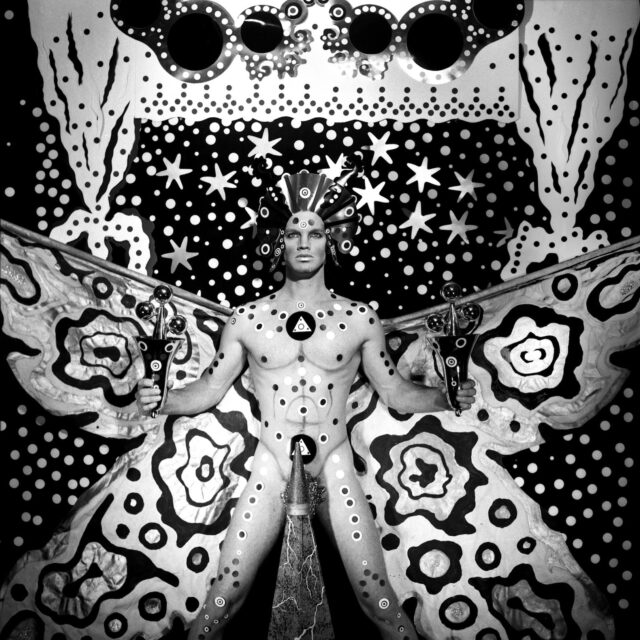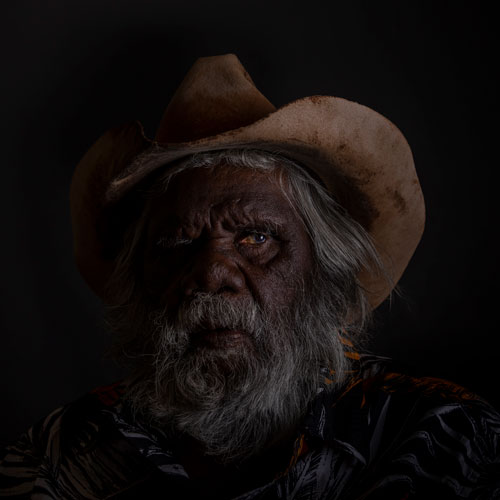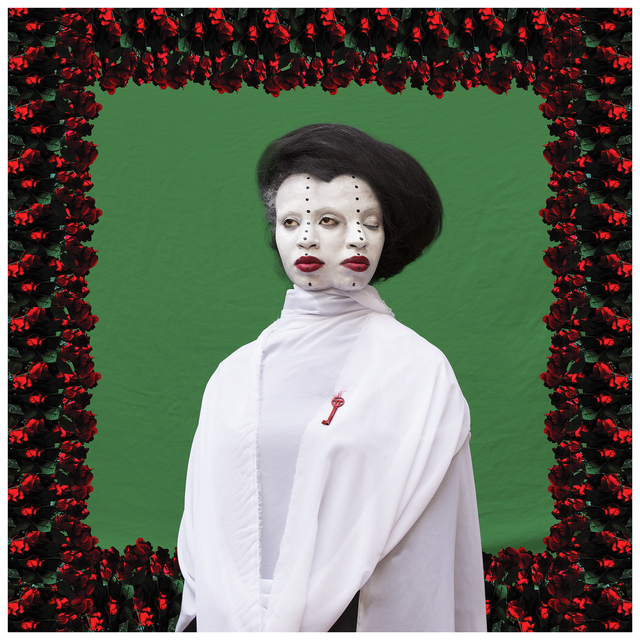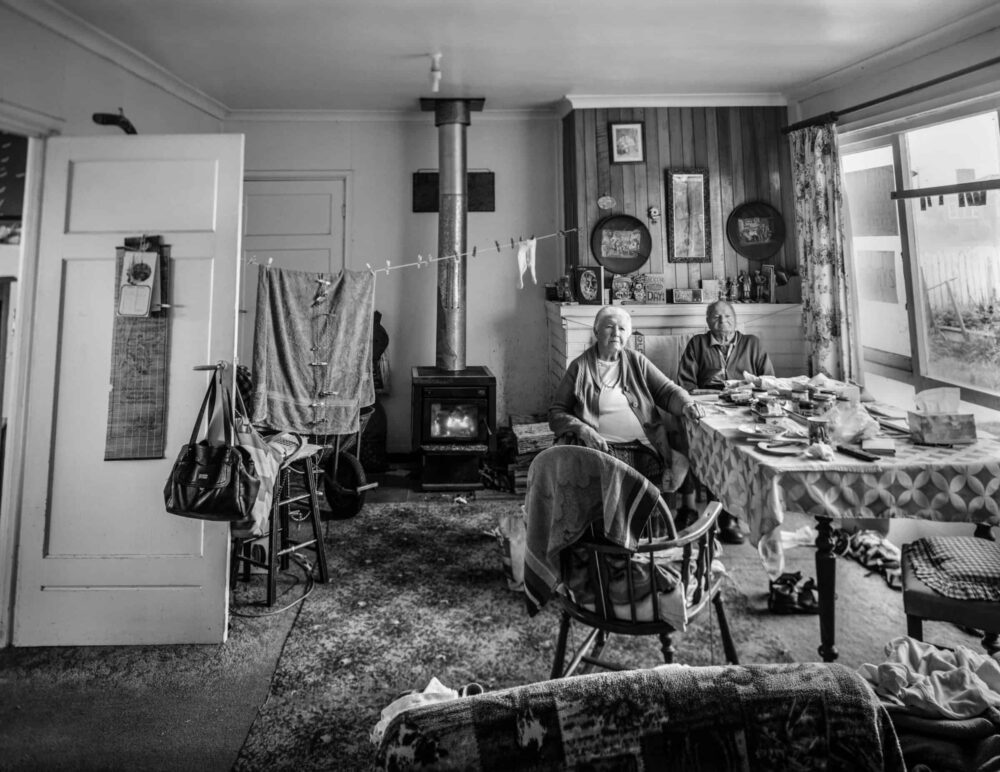The Ballarat International Foto Biennale has announced its 2021 full program that’s scheduled to run for two months, from August 28 – October 24, across the Victorian regional city.

Joining the major headliner, a retrospective of music and family photos by Linda McCartney, are over 30 Core Program exhibitions, and around 90 Open Program shows.
Having a ‘headline’ act engenders high expectations of something exciting, popular, and cutting edge. So for instance, Australia’s leading music festival, Bluesfest, brings out the big names like Iggy Pop, Lionel Richie, Patti Smith, and Midnight Oil.
In 2017, BIFB brought out a formidable headliner in 2017 with a massive show of large-format prints by American photographer, David LaChapelle; in 2019 Chinese artist, Liu Bolin, didn’t quite hit the same high water mark. McCartney has the rockstar surname, but it’s arguable whether her body of work, made more famous by access to celebrities, stacks up as a valid headliner, photographically speaking.
A headline act must also be backed by a solid line up of supporting artists. And BIFB’s full Core Program, curated by BIFB organisers and showing at select venues, looks stronger than the previous iteration with a more diverse range of genres. There is just about something for everyone. One of Inside Imaging‘s major criticisms of the 2019 festival was overall it leaned too hard into conceptual fine art and contemporary photography, while barely showcasing more accessible genres like photojournalism or documentary photography.
While, yes, there is still a heavy presence of fine art photography that takes itself quite seriously, there is also the odd documentary/portrait/photojournalism exhibition.
When it comes to less ‘conceptual’ forms of photography – wildlife, landscape, historic and new street photography, or something just amusing or fun – attendees will be better served by exploring the Open Program. The Open Program is, as the name suggests, open to anyone who makes a submission. These exhibitions appear throughout Ballarat at cafes, shops, venues, outdoors, bars, restaurants, and so on.
Here’s a rundown of some Core Program shows, selected by random, with words from BIFB:
Steven Arnold
Notes from a Queer Mystic
Steven Arnold (1943 – 1994) was a quintessential icon ahead of his time – a revolutionary figure whose ideas and legacy have become strongly relevant in the cultural conversation of today. Pioneering artist and protégé of Salvador Dali, Arnold seamlessly weaved portals into the world of glamour, camp, celebrity and creativity, enchanting viewers through his enigmatic images. Capturing the mystical spirit, exquisite sensitivity and revolutionary essence of the artist, Steven Arnold’s images portray creatures of beauty and elegance, intricacy and identity. Demonstrating his surrealist eye for detail, intricate tableau vivants were created with painting, drawing, set design, costume, makeup and casting in a single photograph – transforming subjects into ethereal, androgynous and mystical figures.
Erieta Attali, Lard Buurman, Rory Gardiner, John Gollings
In Translation
In Translation explores the approach of four leading contemporary photographers, Erieta Attali (ISR), Lard Buurman (NLD), Rory Gardiner (AUS) and John Gollings (AUS) whose careers have taken them across borders to some of the most unique public and private spaces where they translate, narrate and showcase the language of architecture and the built environment.
The relationship between the architect and the photographer is a unique collaboration where one artist interprets the theories, ideas and aspirations of another, capturing a narrative and history of our constructed environment. In Translation looks at architecture through the lens, investigating photography’s role in articulating a sense of space and place.
Robert Fielding
Miil-Miilpa
Robert Fielding is a contemporary artist of Pakistani, Afghan, Western Arrente and Yankunytjatjara descent, who lives in Mimili Community in the remote Anangu Pitjantjatjara Yankunytjatjara (APY) Lands. Combining strong cultural roots with contemporary perspectives, his current practice spans photography works on paper, sculpture, film and installation.
In two distinct bodies of new photographic work for Miil-Miilpa (sacred), Fielding continues his work connected to the significance of Elders in his community. One body of work showcases Elders in his community through intimate portraits and the other explores Country through landscape images produced by experiments with UV exposure.

Aletheia Casey, Gideon Mendel, Ruth Maddison and Rachel Mounsey
Raining Embers
Raining Embers examines the global climate crisis through the lens of four photojournalists that captured the 2020 Australian Bushfires. These fires, coined the Black Summer, devastated vegetation, animal life and communities on the east coast of Australia. The continent was on fire for more than four months with the fight for survival savage and exhausting, shocking the world. No one was untouched by this angry ecological event. A plume of smoke borne from the fires circled the world over, reminding the entire globe that the climate crisis is now and a direct result of abusing natural resources for greed.
These photographers take us through the devastation and despair of communities that were taken by the wildfires. Intimate and broken portraits of people, the ravage that was done to human made objects and the devastation of the land stand for a heart-breaking time in recent history.
Aïda Muluneh
The World is 9
Using vibrant colours and symbolic cultural references, Aïda Muluneh illustrates the African lived experience and the associated post-colonial aftermath endured. She emphasises Ethiopian culture through bright colours, religious and natural settings and elaborate body paint as a celebration of traditional Ethiopian art. Through The World is 9, Muluneh examines questions about life, love and history, and whether it is possible to live in this world with full contentment.
Aïda Muluneh pays homage to the defining characteristics of Ethiopian art as a counter to the rejection of these characteristics as ‘primitive’ by a traditionally Eurocentric view. Infused with theatricality and imagination, her images express an adornment for Ethiopian culture whilst also challenging the Western stereotypical perception of Africa.

Archival Digital Photograph. Photo: Aida Muluneh. Source: BFIB.
Mitchell Moreno
BODY COPY
BODY COPY presents constructed self-portraits responding to found texts on gay and queer hook-up sites. Mitchell Moreno scours apps and websites for adverts which are notably specific, and which fall within the scope of their physical characteristics. Moreno then creates and embodies the imagined ideal candidate through the medium of self-portrait, while the text from the advert becomes the title of the image.
Acting as stylist, set decorator, subject and photographer, each image is created in a corner of Moreno’s home. In recovery from a body dysmorphic and eating disorder, BODY COPY originated as a way of addressing the fear of being photographed, exploring the queer gaze, constructions of gender performance and creative expression as therapy. This series examines the instability of performative queer masculinities that are often imbedded and codified within material and digital cultures, along with scrutiny of photography as a medium to present authenticity.
Arum Dayu, Erika Ernawan, Meicy Sitorus and Tamarra
Dibalik
Dibalik is the Indonesian word for ‘behind’. This exhibition examines the voices and unspoken stories of Indonesian women which are often expressed indirectly, privately and behind closed doors. Dibalik explores the experiences of Feminism in Indonesia with its longstanding history spurred by political revolution and decolonisation.
This exhibition addresses traumatic histories of comfort women during World War II, religious expression and traditions for women, the male gaze, bodily autonomy and transgender experiences. Dibalik features documentary and contemporary photography which address multiple perspectives of what women have and continue to experience in the public and private realm, both in Indonesia and globally.
Lisa Garland
Still Reverence
Lisa Garland captures the essence of community through large scale silver gelatin portraits of friends and family in the familiar setting of their home. For twenty years, Garland has documented the unique spaces and people on the remote North West Coast of Tasmania. From her series Still Reverence, these images capture the intimate relationship between the individual and the domestic interior of their home. An abundance of objects within each space can be interpreted as small traces of a broader narrative of each subject.
Garland captures the typically considered mundane lives of ordinary people, however her hospitable practice of developing a warm relationship with the subjects translates through the lens to instead reveal interesting qualities and unique personalities. Gaining the trust of her subjects, Garland affords the viewer a glimpse into their homes, possessions and lifestyle. She speaks of her subjects’ stoicism, oddities, loss and loneliness, beauty, love, humour and resilience.

Check out the full program here.
The Ballarat International Foto Biennale, August 28 – October 24 in Ballarat.





Be First to Comment